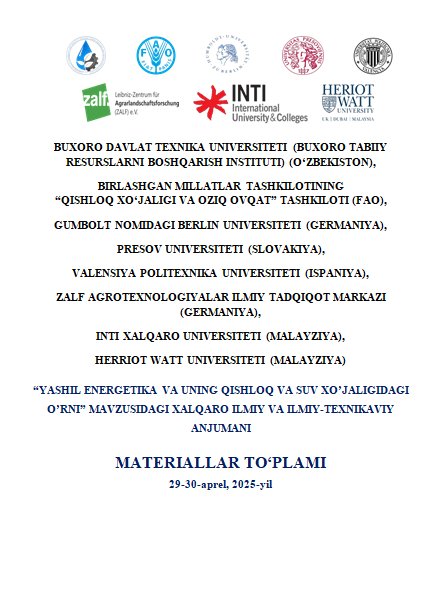CLIMATE CHANGE AND WATER SCARCITY: EMERGING GLOBAL CHALLENGES
Keywords:
innovative technologies, evolution, geopolitical conflicts, geopolitical struggles, water diplomacy, extreme weather, desalination, mold fungus, extreme weather.Abstract
. Water – as one of the most strategic resources of the future – demands a responsible approach, sustainable management, and global solidarity. Otherwise, competition over water resources may pose serious threats not only to the natural environment but also to international peace and stability. Water is the foundation of life, an essential source of vitality, and a critical natural resource necessary for human well-being. However, in recent years, the deterioration of the global ecological environment, climate change, and the growing negative impact of human activity have led to a significant decline in fresh water availability. This situation is causing not only environmental problems but also social, economic, and political challenges in many regions of the world.
Today, water scarcity is no longer just about the limited availability of natural resources — it has become a global crisis tied to unequal management, unfair distribution, and political rivalry. Rapid population growth, industrial expansion, and inefficient water use in agriculture have all contributed to a sharp increase in demand for water. At the same time, global warming, desertification, and droughts continue to reduce existing water sources. Water scarcity is intensifying competition among countries over transboundary water resources, which in turn increases the risk of geopolitical conflicts. For example, upstream countries aim to strengthen control over water flows, while downstream nations seek to protect their access and interests. Such tensions are increasingly evident in regions like the Middle East, Central Asia, and parts of Africa. This article analyzes the root causes behind the decline of water resources, the environmental and political consequences, as well as possible solutions to the issue. Effective approaches such as water conservation, wastewater recycling, and the implementation of innovative technologies can help address these challenges. Furthermore, promoting fair water policies at the international level, strengthening cooperation among stakeholders, and using diplomatic tools to ease tensions are emphasized as essential strategies.
References
1. Bahritdinov B. – "Irrigatsiya va O‘zbekiston suv xo‘jaligi". Toshkent: Fan, 1981.
2. G‘ulomov P., Vohidov R. – "Suv resurslari va ularning ekologik ahamiyati". Toshkent: O‘zbekiston Milliy Ensiklopediyasi, 2005.
3.Lvovich M. I. – "Mirovie vodnie resursi i ix budushchee". Moskva: Mysl, 1974.
4. Mirziyoyev Sh. M."Yangi O‘zbekistonning taraqqiyot strategiyasi".Toshkent: O‘zbekiston, 2022.
5.Postel S. – "Last Oasis: Facing Water Scarcity". New York: W.W. Norton & Company, 1997.
6. Shiklomanov I. A. – "World Water Resources at the Beginning of the 21st Century". Cambridge: Cambridge University Press, 2003.
7.Sultonov A. – "Suvni muhofaza qilish va oqilona foydalanish". Toshkent: Akademnashr, 2010.
8. United Nations – "World Water Development Report 2023: Partnerships and Cooperation for Water". UNESCO, 2023.
9. Vörösmarty C. J. et al. – "Global Water Resources: Vulnerability from Climate Change and Population Growth". Science, 2000, Vol. 289, pp. 284-288.
10.Xudoyberdiyev T."O‘zbekiston suv xo‘jaligi:muammolar va yechimlar". Toshkent: Sharq, 2015.
11. Zokirov S. – "Chuchuk suv muammosi va uning oqibatlari". "Ekologiya xabarnomasi" jurnali, 2018, №3, 45-52-betlar.
12. Gleick P. H. – "Water in Crisis: A Guide to the World’s Fresh Water Resources". Oxford: Oxford University Press, 1993.


